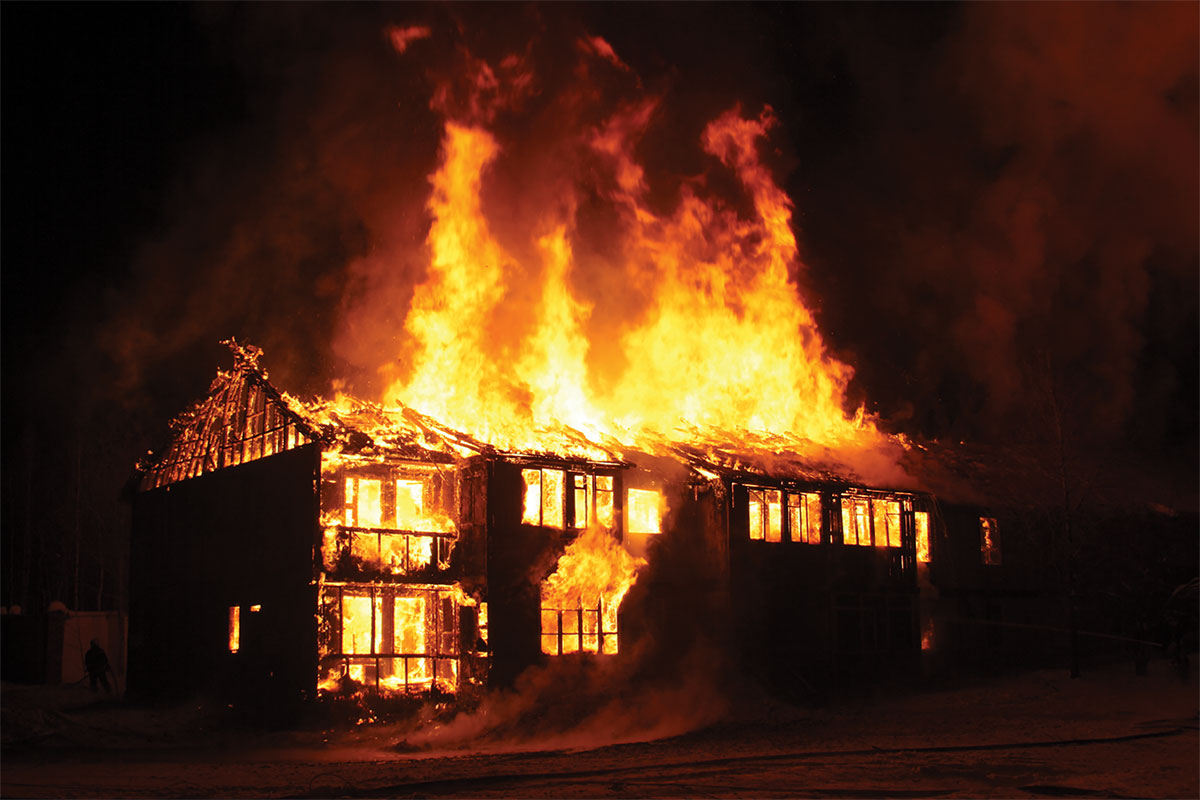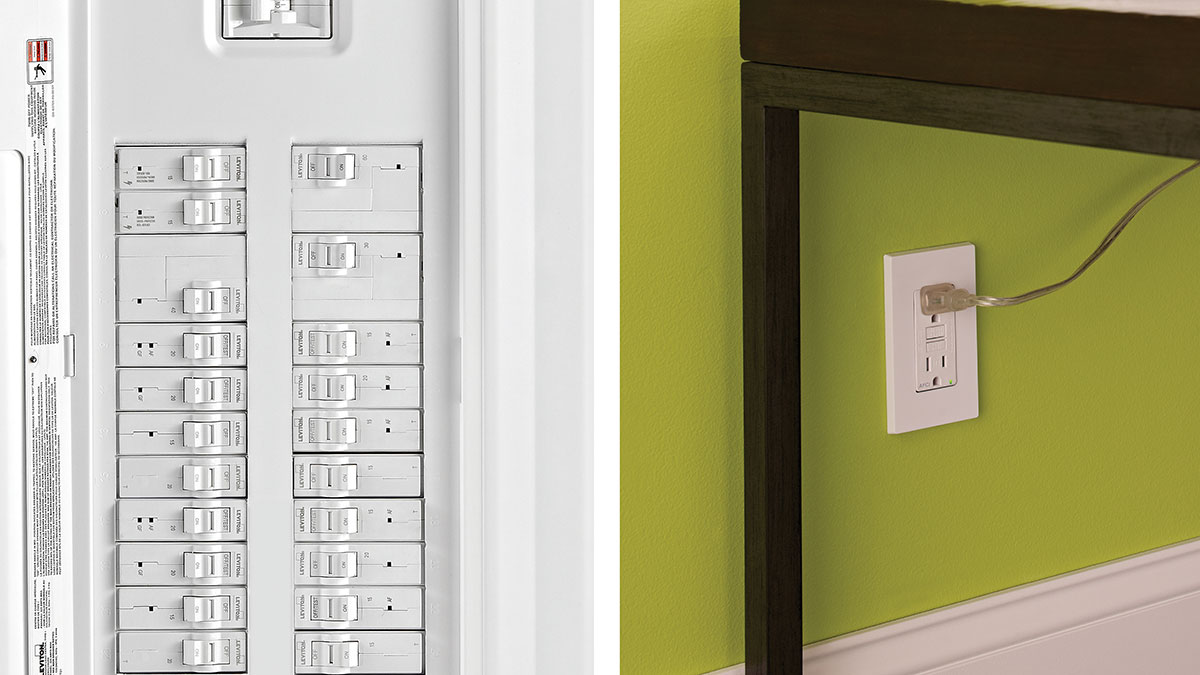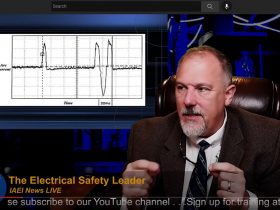The objective of this paper is to increase inspector awareness of arc-fault circuit interrupters (AFCI). The significance of AFCIs is discussed in the introduction, and this is followed by a description of recent changes associated with the standard, with the National Electrical Code, and with the availability and application of the technology. Here there is a general discussion of AFCI availability, followed by a detailed description of the Cutler-Hammer line of residential miniature circuit breakers that incorporate branch/feeder AFCIs and a brief description of the technology involved. The operating experience has been excellent, relative to both fire protection and immunity from unwanted tripping. It is concluded that arc-fault circuit interrupters provide a significant fire-safety improvement for dwelling unit electrical distribution systems. They are the residential electrical safety technology of the future.
Introduction
As explained in an earlier AFCI article in this magazine, present residential overcurrent protective devices such as miniature circuit breakers (MCBs) are designed to protect circuit conductors by opening automatically before conductor damage is caused by excessive heating. For low current overloads, the breaker trips due to the heating of an internal bimetal. For high current overloads, the circuit breaker trips “instantaneously” due to internal magnetic forces. Because they prevent excessive or dangerous temperatures in the conductors or conductor insulation, these present-day circuit breakers reduce, to some extent, the incidence of residential fires associated with the electrical distribution system.
Data provided by CPSC2 show that about 10 percent of present-day residential fires are associated with the electrical distribution system. This percentage represents 41,600 fires and 370 civilian deaths. Further, these fires cause 1,430 civilian injuries and over $682.5 M in property losses. AFCIs have been specifically designed to supplement the protection afforded by overcurrent protective devices such as circuit breakers, and to make a significant reduction in these numbers.
An arc-fault circuit interrupter, as defined in the National Electrical Code3, is a device intended to provide protection from the effects of arc faults by recognizing characteristics unique to arcing and by functioning to de-energize the circuit when an arc fault is detected. In the embodiment discussed in this paper, the AFCI is integrated into the circuit breaker design, and the resulting integral circuit breaker (Listed to UL 489) and AFCI (Listed to UL 1699) combines conventional wire thermal-protection with the mitigation of arcing effects.
The previous paper1 was published in 1997. Since then, a UL standard has been published 4, AFCI issues have been addressed relative to the National Electrical Code 3, there have been advances in AFCI technology, and increases in both field experience and product availability. The objective of the present paper is to discuss these recent changes. In particular, the paper is intended to increase inspector awareness of this new fire-safety product.
Standards Situation (UL 1699)
The First Edition of UL 1699 was published in February 1999. This standard defines several types of AFCI’s:
• Branch/Feeder Arc-Fault Circuit Interrupter – A device intended to be installed at the origin of a branch circuit or feeder, such as at a panelboard. It is intended to provide protection of the branch-circuit wiring, feeder wiring, or both, against unwanted effects of arcing. This device also provides limited protection to branch circuit extension wiring. It may be a circuit-breaker device or a device in its own enclosure mounted at or near a panelboard.
• Outlet Circuit Arc-Fault Circuit Interrupter – A device intended to be installed at a branch-circuit outlet, such as at an outlet box. It is intended to provide protection of cord-sets and power-supply cords connected to it (when provided with receptacle outlets) against the unwanted effects of arcing. This device may provide feed-through protection of the cord-sets and power-supply cords connected to downstream receptacles.
• Combination Arc-Fault Circuit Interrupter – An AFCI which complies with the requirements for both branch feeder and outlet circuit AFCIs. It is intended to protect downstream branch-circuit wiring and cord-sets and power-supply cords.
The standard also deals with cord AFCIs and portable AFCIs.
There is a great deal of commonality in the test requirements for the three types of AFCIs defined above. Thus they must all recognize parallel (line to neutral) arcing faults in circuits with available short-circuit currents of 75A and above. At these current levels, the intermittent arcs, see Figure 1, associated with damaged or abused cables and wires may be insufficient to trip the circuit breaker either thermally or instantaneously. The main difference between the branch/feeder requirements and the outlet requirements is that the branch/feeder is tested for parallel faults in both the installed wire (Type NM-B) and in commonly used appliance cord (Type SPT-2). The outlet device, however, is tested solely with Type SPT-2 cord.

Figure 1. Typical current waveform observed when a carbon-steeled blade cuts through 16 AWG SPT-2 cord to create a parallel arc.
There is also some commonality in the test requirements for responding to series arcs associated with arcing at a break in a line or neutral conductor. For branch/feeder AFCIs the tests are performed at current levels of 5A and above in Type NM-B cable. The criterion is that cotton above the break point internal to the cable must not ignite. For outlet AFCIs the tests are performed with Type SPT-2 cord, and the time for arc extinction must be less than specified arc-test clearing times.
For the three types of AFCIs, the standard contains similar tests to check that the devices are immune to unwanted tripping. These tests include immunity to (a) transient inrush currents, (b) the waveforms associated with electronic devices, (c) the arcing waveforms associated with the burn out of incandescent lamps, and (d) the waveforms of “safe” arcs associated with the normal operation of electrical devices. Further, there are similar tests to check that the devices will not be masked by circuit conditions.
It is noted that the Canadian Standards Association has a Technical Information Leaflet5 with requirements for AFCIs that closely parallel the UL standard for branch/feeder AFCIs. A more comprehensive CSA standard is presently under development.
The Cutler-Hammer AFCI is of the branch/feeder type and consequently addresses series and parallel faults in the installed wiring; Zone 1 of Figure 2. This is the origin of about 35 percent (6,7) of residential fires associated with the electrical distribution system. In addition, the branch /feeder AFCI detects parallel faults in Zone 2, which represents the appliance cords and loads beyond the outlet, and the parallel faults in Zone 3. It also responds to all arcs to ground in Zones 1, 2 and 3.

Figure 2. Division of the residential wiring into four zones.
Code Situations (NEC, Vermont and CEC)
Arc-fault circuit interrupters were included, for the first time, in the 1999 edition of NEC 70 (The National Electrical Code). They are referenced in Section 210-12 of Article 210 which deals with branch circuits. There we find:
210-12(a) Definition – An arc-fault circuit interrupter is a device intended to provide protection from the effects of arc faults by recognizing characteristics unique to arcing and by functioning to de-energize the circuit when an arc fault is detected.
210-12(b) Dwelling Unit Bedrooms – All branch circuits that supply 125 volt, single phase, 15 and 20 ampere receptacle outlets installed in dwelling unit bedrooms shall be protected by an arc-fault circuit interrupter(s). This requirement shall become effective January 1, 2002.
It must be noted that, in order to protect a complete branch circuit, as required by the 1999 NEC, the device must be located in or adjacent to the load center where the branch-circuit overcurrent protective device is located.
During the proposal stage for the 2002 edition of the NEC, there were many additional proposals to extend the application of branch/feeder AFCIs and to include AFCIs at the outlets. At the moment, it seems probable that branch/feeder AFCI protection will be mandated for all bedroom outlets rather than solely for bedroom receptacle outlets. Other proposals to extend branch/feeder coverage to additional dwelling unit rooms and, for example, to hotel guestrooms and limited care facilities will continue to be discussed through the comment period. From proposals submitted for the 2002 NEC, it also seems likely that branch/feeder AFCI protection will be extended to the bedroom outlets of mobile homes and manufactured homes.
With respect to the state of Vermont, branch/feeder AFCIs will be mandated for all 120V circuits serving receptacle outlets in dwelling unit living areas and bedrooms. The effective date is January 1, 2001. The application of branch/feeder AFCIs to dwelling unit bedroom circuits is also under active discussion relative to the Canadian Electrical Code, Part 1.
Product Availability
At the present time, branch/feeder AFCIs have been announced by four of the major US manufacturers of residential miniature circuit breakers (MCBs). These products are effective8. With respect to Cutler-Hammer, there is a complete line of UL Listed single-pole, 15A and 20A MCBs that contain the additional function of AFCI, see Figure 3. There are also single pole MCBs that contain both UL Listed AFCI and ground-fault circuit interrupter (GFCI) functions. Further, the AFCI function has been incorporated into two-pole Listed circuit breakers that are also classified for mitigating the effects of arcs, and which provide protection in shared neutral circuits.

Figure 3. Photographs of the line of MCBs with AFCI
It should be noted, as indicated in Figure 4, that these MCBs, with AFCI function, are completely interchangeable with conventional Cutler-Hammer MCBs. Their connection in the loadcenter is identical to present-day MCBs with GFCI function, namely with a wire connection to ground, and their cost is also similar to an MCB with integrated ground-fault protection.

Figure 4. Diagram showing the interchangeability between MCBs, with branch/feeder AFCI capability, and conventional MCBs
Operation of the Cutler-Hammer AFCI
A block diagram of a single pole AFCI appears in Figure 5. The load current sensor output is fed to an arc signature filter whose output is responsive to the magnitude of the arcing currents. Normal “non-arc” related current components are filtered out. The signal is then amplified and fed to a logic block that distinguishes between dangerous arcing events and normal circuit transients, including the waveforms associated with incandescent-lamp-burnout. In the event of a dangerous arc, the logic block provides an output that will trip the breaker. This logic block has a second input from a ground-current-sensor amplifier. If this logic input exceeds a preset 30 milliamp trip threshold, a trip signal is provided. This arc-fault circuit interrupter (listed to UL 1699) is also available in combination with ground-fault circuit protection (listed to UL 943). In this embodiment, the ground-fault sensor is set at five milliamps for personnel protection and a grounded neutral sensor is included. Individual test buttons are provided for both the AFCI and GFCI functions. It is noted that the value of a residential circuit breaker including both AFCI and GFCI technologies was recognized by UL in the Recommendations Section of their 1995 Report to CPSC9.

Figure 5. A block diagram of a single pole AFCI
A block diagram of a two-pole Listed circuit breaker also classified for mitigating the effects of arcs appears in Figure 6. The design basically consists of two single pole AFCI designs as described in Figure 5 with a common logic trip output signal. The response to arcs to ground is set at 30 milliamps. There are individual AFCI test circuits for each of the poles.

Figure 6. A block diagram of a two-pole Listed circuit breaker also classified for mitigating the effects of arcs
Operating Experience
More than 10,000 Cutler-Hammer MCBs with AFCI protection are presently operating in the field. The total operating time is more than 150 million hours. During that period there have been no reports of unwanted tripping issues. More importantly, there have been cases of reported fire prevention. For example, there have been cases of the detection of arc tracking at the base of two-wire lighting fixtures. These fixtures were typically located in the dining room, and arc tracking near the base of the bulb had led to a parallel arc. Other examples include the initiation of an arcing fault in a TV set, supplied by a two-wire cord, due to water dripping from a hanging plant, and the detection of arcing within junction boxes. Additional discussion of effective branch/feeder AFCI protection appears in a recent NFPA paper 10.
Future Applications
At the present time, branch/feeder AFCIs will provide protection to 120-volt dwelling unit bedroom circuits. These circuits are indeed associated with a large number of residential electrical distribution system fires11. However, other residential locations also have a high incidence of electrical fires11, and it is therefore to be expected that branch/feeder AFCIs will find application for many additional residential circuits.
The AFCI function can also be expected to extend to the higher voltages (e.g. 240 volt, 277 volt and 480 volt) associated with commercial and industrial electrical distribution systems.
It is also noted that the aerospace industry12 is interested in AFCI technology relative to the protection of onboard electrical wiring.
Conclusions
Arc-fault circuit interrupters represent the application of new technology to an old problem; namely, the need to improve fire safety in residential electrical distribution systems. Standards have been developed for the requirements of these devices, and branch/feeder AFCIs are available from many manufacturers. National, Canadian and state electrical code issues are being addressed, and the field experience with branch/feeder AFCIs has been excellent. AFCIs are the technology of the future with a fundamental focus on safety.
References:
1. Arc-Fault Circuit Interrupters: New Technology for Increased Safety, J. C. Engel, R. J. Clarey, and T. M. Doring, IAEI News, October 1997.
2. 1996 Fire Loss Estimates, US Consumer Product Safety Commission Report, 1998
3. National Electrical Code, NFPA 70, 1999.
4. Arc-Fault Circuit Interrupters, UL 1699 Standard for Safety, First Edition, February 28, 1999
5. CSA Publication of Technical Information Letter (TIL) No. M-02, Interim Requirements for Arc-Fault Circuit Interrupters, September 30, 1999.
6. What Causes Wiring Fires in Residences?, L. Smith and D. McCoskrie, Fire Journal, pp. 19-24, January/February 1990.
7. The U.S. Home Product Report, 1992-1996, (Appliances and Equipment), K. Rohr, NFPA Fire Analysis and Research Division, February 1999
8. Preventing Home Fires: AFCIs, Consumer Product Safety Review, Volume 4, #1, Summer 1999
9. “Technology for Detecting and Monitoring Conditions that Could Cause Electrical Wiring System Fires”, Report Prepared by Underwriters Laboratories (UL Project Number NC233, 94ME78760) for the Consumer Product Safety Commission (Contract Number CPSC-C-94-1112), September 1995
10. AFCIs Target Residential Electrical Fires, G. D. Gregory, NFPA Journal, pp. 69-71, March/April 2000.
11. Residential Electrical Distribution Fires, L. Smith and D. McCoskrie, US Consumer Product Safety Commission Report, December 1987.
12. Arc-Fault Circuit Interrupters, J. McCormick, M. Walz, J. Engel, P. Thiesen and E. Hetzmannseder, Proceedings of the Conference on Advances in Aviation Safety, Paper 2000-1-2121, Daytona Beach, Florida, April 2000.










Find Us on Socials